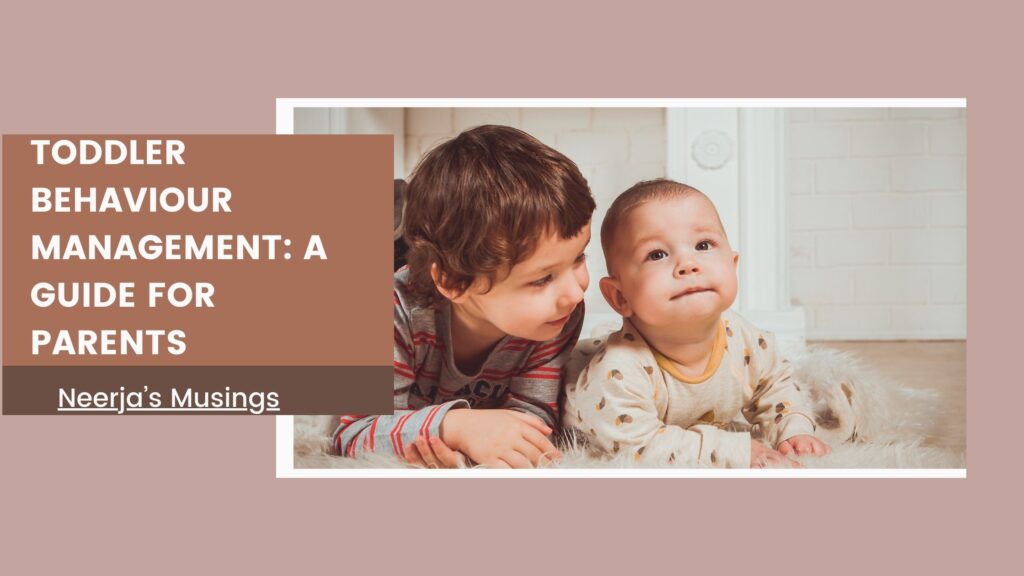 Managing toddler behaviour can be a challenging yet rewarding experience for parents. In this guide, we look deep into effective strategies for toddler behaviour management, including discipline techniques, handling tantrums, and encouraging positive behaviour. Learn how consistent parenting and understanding toddler development can help you navigate this important stage in your child’s growth.
Managing toddler behaviour can be a challenging yet rewarding experience for parents. In this guide, we look deep into effective strategies for toddler behaviour management, including discipline techniques, handling tantrums, and encouraging positive behaviour. Learn how consistent parenting and understanding toddler development can help you navigate this important stage in your child’s growth.
The Duality of Toddlerhood: Love and Frustration
Parents often find themselves in a love-hate relationship with toddlerhood. The boundless energy, curiosity, and sheer delight of a toddler can be incredibly rewarding. At the same time, toddlers’ frequent tantrums, defiance, and testing of boundaries can be exhausting and frustrating. It’s essential to remember that these behaviours are a natural part of their development.
Toddlers are in a constant state of learning. Every day, they acquire new skills and are eager to use them, often in ways that test parental patience. Understanding that this boundary-testing is a crucial part of their growth can help parents approach discipline with empathy and consistency.
Consistency: The Cornerstone of Discipline
One of the most important aspects of disciplining a toddler is consistency. Toddlers need clear and consistent rules to understand what behaviours are acceptable. Parents who set up rules and consistently enforce them help their children learn self-discipline and boundaries.
Follow Through on Consequences:
If you tell your toddler that a certain behaviour will result in a time-out, it’s essential to follow through every time. Empty threats can undermine your authority and make it harder for your child to take you seriously.
Model Appropriate Behaviour:
Children learn by observing the adults around them. Make sure your behaviour is what you want your child to emulate. For instance, if you want your child to pick up their toys, ensure you’re not leaving your belongings scattered around.
Eliminate Temptation
Toddlers are naturally curious and will explore everything within their reach. To prevent unnecessary conflicts and ensure safety:
Remove Hazards:
Keep items like TVs, phones, electronics, choking hazards, and cleaning supplies out of reach. This reduces the chances of your toddler getting into something dangerous or off-limits.
Create Safe Spaces:
Designate areas where your child can explore freely without constant supervision. Child-proofing your home can provide a safe environment for your toddler’s curiosity.
Use Distraction and Redirection
When your toddler is heading toward something dangerous or inappropriate, distraction and redirection can be effective techniques:
Calmly Intervene:
Gently say “No” and either remove your child from the area or take the object away. Then, immediately engage them in a different, acceptable activity.
Provide Alternatives:
Offer your child something else to do or play with. For instance, if they’re reaching for your phone, give them a toy or start a game with them.
Practice Time-Outs
Time-outs can be an effective way to manage difficult behaviour. The key is to use them correctly:
Short and Simple:
A good rule of thumb is 1 minute per year of age, with a maximum of 3-5 minutes. Longer time-outs are unnecessary and can be counterproductive.
Calm and Neutral:
Explain calmly why the behaviour is unacceptable and place your child in a designated time-out area, free from distractions. Avoid engaging with them until the time-out is over.
Avoiding and Handling Temper Tantrums
Tantrums are a common part of toddlerhood due to their limited ability to express themselves and their desire for independence. Here are some strategies to manage them:
Prevent Tantrums:
Ensure your child isn’t acting out to get attention by catching them being good and rewarding positive behaviour. Offer choices to give them a sense of control over minor decisions.
Stay Calm During Tantrums:
If your child throws a tantrum, try to remain calm. Avoid giving in to their demands, which can reinforce the behaviour. Instead, wait for them to calm down and then praise their composure.
Encouraging Positive Behaviour
Positive reinforcement is one of the most effective ways to encourage desirable behaviour in toddlers:
Praise and Reward:
Notice and praise your child when they behave well. This reinforces good behaviour and shows them that it gets your attention.
Set Realistic Expectations:
Understand what your child is developmentally capable of and adjust your expectations accordingly. Provide age-appropriate tasks and challenges to build their confidence.
Supporting Independence
Toddlers are naturally inclined to seek independence. Allowing them to make small decisions can help satisfy this need while still maintaining necessary boundaries:
Offer Choices:
Give your child choices between two acceptable options. This gives them a sense of control and helps them feel empowered.
Set Clear Boundaries:
While giving choices, ensure you maintain control over the larger decisions and keep safety as a priority.
Toddlerhood is a time of incredible growth and discovery for children and their parents. By understanding the developmental needs of toddlers and applying consistent, empathetic discipline, parents can guide their children through this challenging yet rewarding stage. Remember, the goal is to help your toddler develop into a confident, well-behaved child who feels secure and loved. Embrace the journey, and cherish the small moments of joy and discovery along the way.
Happy parenting!
Neerja Bhatnagar
Feel free to connect with me on social media if you’d like to stay updated on more content like this!
Instagram | Facebook | YouTube |Twitter |Podcast |
I have written 3 solo books and 3 anthologies. You can buy my books on Amazon. If you are on Kindle Unlimited, you can read them for free. Pls, do check and share your reviews.




A very well written and insightful post. My once-upon-a-time toddlers are now in the tween/ teen stage, and I do miss the cute toddler stage sometimes 🙂
Thank you Manasi.Even I do..mine are men now. But memories of those days still tickle the heart ❤️😍.